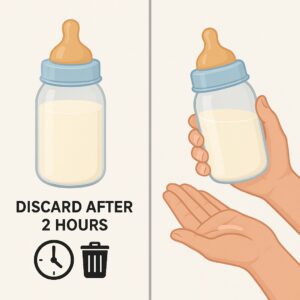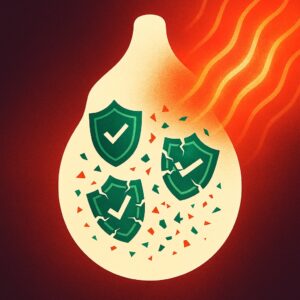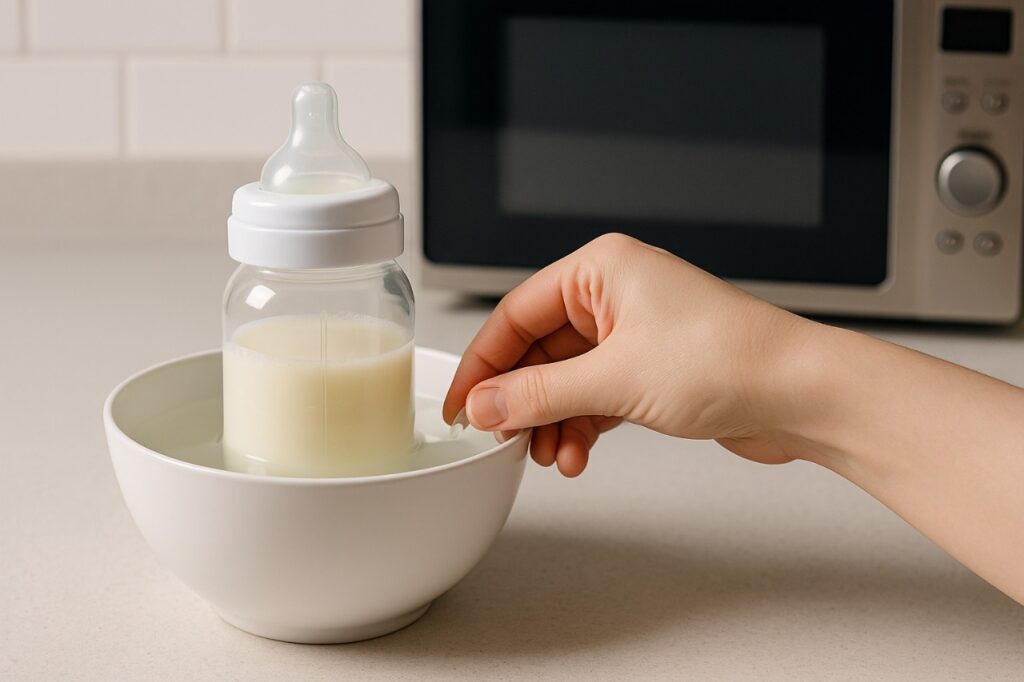Why Moms Often Wonder About Reheating Breast Milk
Many U.S. moms ask the same question: “Can I safely reheat breast milk that’s already been warmed once?” Whether it’s due to leftover milk after a feeding or a baby who didn’t finish the bottle, the confusion is real — and important.
Reheating breast milk isn’t just about convenience; it’s about maintaining your baby’s health, nutrition, and safety. This guide explains when reheating is safe, when it isn’t, and how to do it properly without destroying nutrients.
👉 Learn more about long-term storage in our guide on How to Organize Breast Milk in Freezer (Flat-Freezing & FIFO Guide).
Understanding the Basics: What Happens When Milk Is Warmed
Breast milk is rich in delicate proteins, enzymes, and antibodies that protect your baby from illness and aid digestion. When milk is repeatedly heated or exposed to high temperatures, these vital components start to degrade.
According to the Centers for Disease Control and Prevention (CDC), once breast milk has been warmed, it should be used within 2 hours and never reheated again. Warm milk creates an environment where bacteria can grow quickly, making it unsafe for later use.
💡 Temperature clarification: If the surrounding temperature exceeds 70°F (21°C), the safe time window can shorten to 1–2 hours, as supported by CDC guidelines. This ensures optimal hygiene when traveling or during warm weather.
The Correct Way to Warm Breast Milk
To warm breast milk safely and retain its nutrients:
- Use warm (not boiling) water. Place the sealed milk bag or bottle in a bowl of water around 98°F / 37°C — which matches normal body temperature. This gentle heat helps preserve milk’s enzymes and immune factors.
- Avoid microwaving. Microwaves can destroy antibodies and create hot spots.
- Swirl gently. Don’t shake; swirling keeps the nutrients intact.
- Test before feeding. Milk should feel lukewarm, not hot, when dropped on your wrist.
This “Body Temperature Warming” method is ideal because it mimics natural breastfeeding warmth, making milk soothing and safe for your baby.
For step-by-step instructions, visit Mayo Clinic’s Breast Milk Storage & Warming Guide.
Can You Reheat Milk That Baby Didn’t Finish?
Unfortunately, no. Once your baby has drunk from the bottle, bacteria from the mouth en

ter the milk, making it unsafe to reheat or reuse later. Even refrigeration can’t stop this bacterial growth.
A smart solution is to divide milk into smaller 2–3 oz servings before warming. That way, you only heat what’s needed and reduce waste.
👉 To learn how to store milk efficiently, check Best Non-Plastic Breast Milk Storage Solutions: Glass Jars, Silicone Bags, and Steel Containers (U.S. Guide 2025).
Reheating Milk from the Fridge vs. Freezer
From the refrigerator:
- Take out only the required portion for one feeding.
- Warm gently using warm water (not above 98°F).
- Use within 2 hours after warming.
From the freezer:
- Thaw slowly in the refrigerator overnight or under cool running water.
- Never refreeze thawed milk.
- Warm only once before feeding.
The Science Behind Nutrient Breakdown
When breast milk is overheated or reheated multiple times, certain temperature-sensitive antibodies — such as lactoferrin, immunoglobulins (IgA, IgG), and lysozyme — begin to denature. These components are responsible for fighting infections and boosting immunity.
By keeping the temperature close to body warmth (around 37°C), you preserve these vital nutrients and maintain the milk’s natural protective properties.
Common Mistakes to Avoid While Reheating
- Using boiling water or microwaves — damages proteins and vitamins.
- Rewarming leftover milk — unsafe due to bacterial growth.
- Leaving milk at room temperature — discard after 2 hours.
- Mixing fresh milk with reheated milk — shortens storage life.
- Reheating large portions — warm only what your baby will drink.
The Science Behind Reheating Restrictions

The U.S. Food and Drug Administration (FDA) explains that breast milk is a “living food” — filled with active enzymes and antibodies that degrade at high temperatures.
Repeated reheating destroys delicate immune compounds like lactoferrin, which helps iron absorption, and immunoglobulin A (IgA), which protects the baby’s gut. This is why pediatricians recommend warming only once and discarding leftovers promptly.
FAQ: Moms’ Most Common Questions About Reheating
Q1: Can I reheat milk that was warmed but not used?
No. Once warmed, it must be used within 2 hours and discarded.
Q2: Can I reheat milk that’s been refrigerated but never warmed?
Yes. You can safely warm it once, but don’t rewarm it again later.
Q3: Is it safe to mix reheated milk with freshly pumped milk?
No. Always chill freshly pumped milk before combining with previously cooled milk.
Q4: What’s the safest way to reheat frozen milk?
Thaw in the fridge overnight, then warm gently in warm water at 98°F (37°C). Never refreeze thawed milk.
Q5: Can I store reheated milk in a thermos for later use?
No. Prolonged warmth promotes bacterial growth. Feed immediately after warming.
Conclusion: Warm It Once, Keep It Safe
Reheating breast milk might seem convenient, but doing it wrong can destroy nutrients and risk your baby’s health. The golden rule remains simple — warm once, use within 2 hours, and discard leftovers.
By following these proven techniques and understanding the science behind safe warming, you protect your baby’s immune health and ensure every drop stays packed with natural nutrition.

